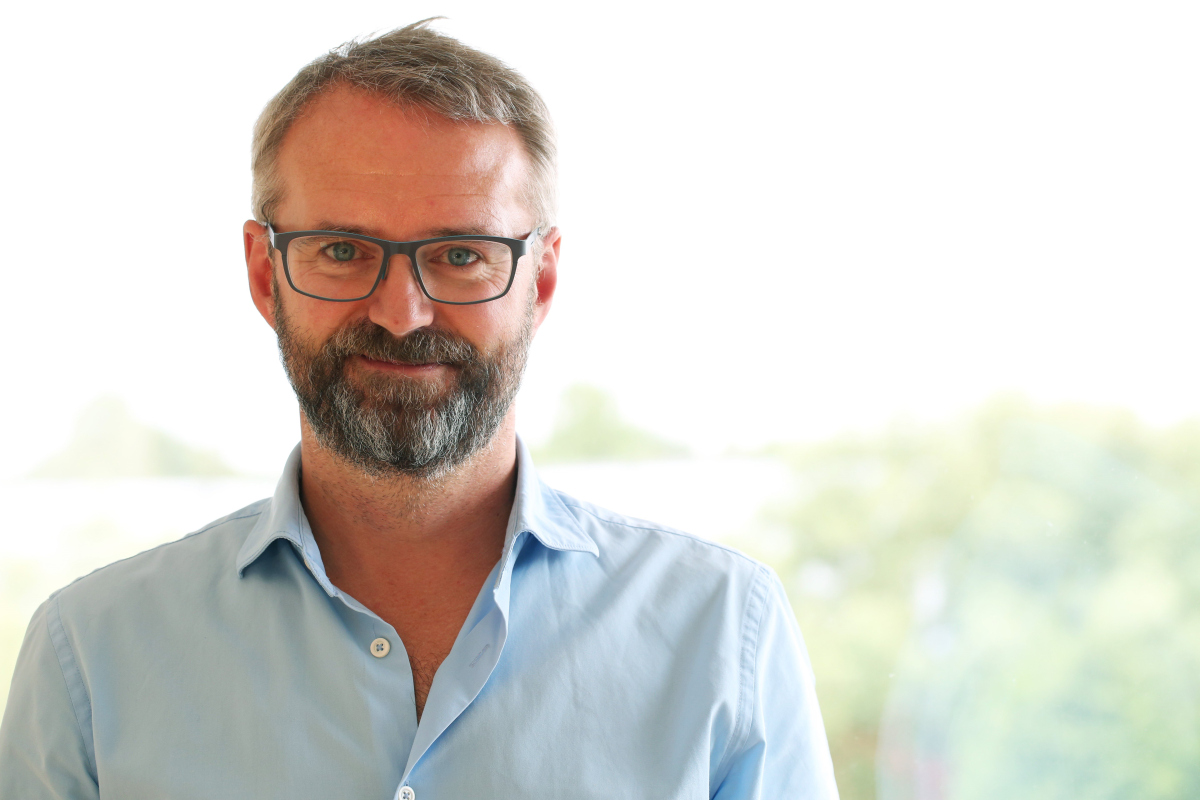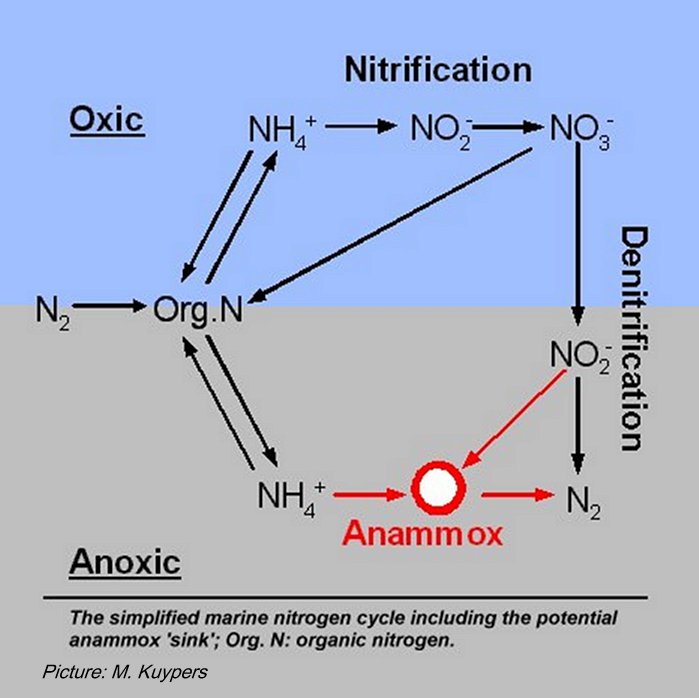- Departments
- Department of Biogeochemistry
- Biogeochemistry Group
- People
- Gaute Lavik
- Research Projects
Research Projects
Scientist
MPI for Marine Microbiology
Celsiusstr. 1
D-28359 Bremen
Germany
|
Room: |
3136 |
|
Phone: |

The impact of anaerobic ammonium oxidation on the oceanic nitrogen cycle
The availability of fixed inorganic nitrogen (nitrate, nitrite and ammonium) limits primary productivity in many oceanic regions and controls atmospheric carbon dioxide concentrations on geological time scales. The conversion of nitrate to N2 by heterotrophic bacteria (denitrification) is believed to be the only important sink for fixed inorganic nitrogen in the ocean. Recently, we provided evidence for the abundance and activity of autotrophic bacteria that anaerobically oxidize ammonium with nitrite to N2 in the world's largest anoxic basin, the Black Sea (Kuypers et al., in press). Phylogenetic analysis of 16S ribosomal RNA gene sequences shows that the bacteria are related to deep-branching members of the order Planctomycetales performing the Anammox (anaerobic ammonium oxidation) process in ammonium-removing bioreactors. Nutrient profiles, fluorescently labelled RNA probes, 15N tracer experiments, and the distribution of specific ladderane membrane lipids indicate that ammonium diffusing upwards from the anoxic deep water is effectively consumed by anammox bacteria in the suboxic zone of the Black Sea. These results demonstrate that anammox bacteria are abundant and play an important role in the nitrogen cycle of the Black Sea. In fact, the widespread occurrence of ammonium consumption in suboxic marine waters as well as in sediments suggests that anammox bacteria could play an important but as yet neglected role in the oceanic loss of fixed nitrogen. It is proposed to study this potentially important process in the marine nitrogen cycle in a collaborative project with the Institute of Baltic Sea Research-Warnemünde (IOW), University of Nijmegen and Royal Netherlands Institute for Sea Research (NIOZ) in different marine settings by (1) determining high resolution nutrient and (2) lipid profiles, (3) DNA/RNA analyses, (4) determination of anammox rates using 15N and 13C labelled substrates and (5) cultivation. This combined effort will provide a highly needed insight into the role of anammox bacteria for the loss of fixed inorganic nitrogen in the ocean.
The role of large nitrate storing bacteria in the marine nitrogen cycling
Our main focus is on the implications that the appearance of these bacteria have for the marine nitrogen cycle under different conditions. To what degree do they denitrify (NO3 to N2 gas) which means a loss of nitrogen from the marine environment? If they solely reduce nitrate to ammonium, do this increase eutrophication by keeping dissolved nitrogen in the water, or do they "leak out" nitrate in anoxic sediments and thus fuel the denitrifiers and thus enhance the loss of dissolved nitrogen?
Methods
We are both studying and monitoring the annual changes in natural environments during expeditions to our field areas and growing them in aquariums at our laboratory. We are also aiming to develop pure cultures.
Both natural and labeled nitrogen isotope techniques to trace the faith of the nitrate as well as nutrient measurements (G. Lavik).
Microscope studies, like diversity and biomass determination (A. Preisler), along with information about the sedimentary conditions like pore water content and grain-size distribution gives us information about their preferred and limiting conditions.
Micro electrode measurements (E. Wieringa), among others, makes us able to monitor changes in the sediments (aquarium) under changed frame conditions.
At the moment our main study area is Eckernförde near Kiel in the Baltic sea (Germany), but we have also analysed sediments from the Wadden Sea, Limfjorden (Denmark) and the Chilean and Namibian coast.
